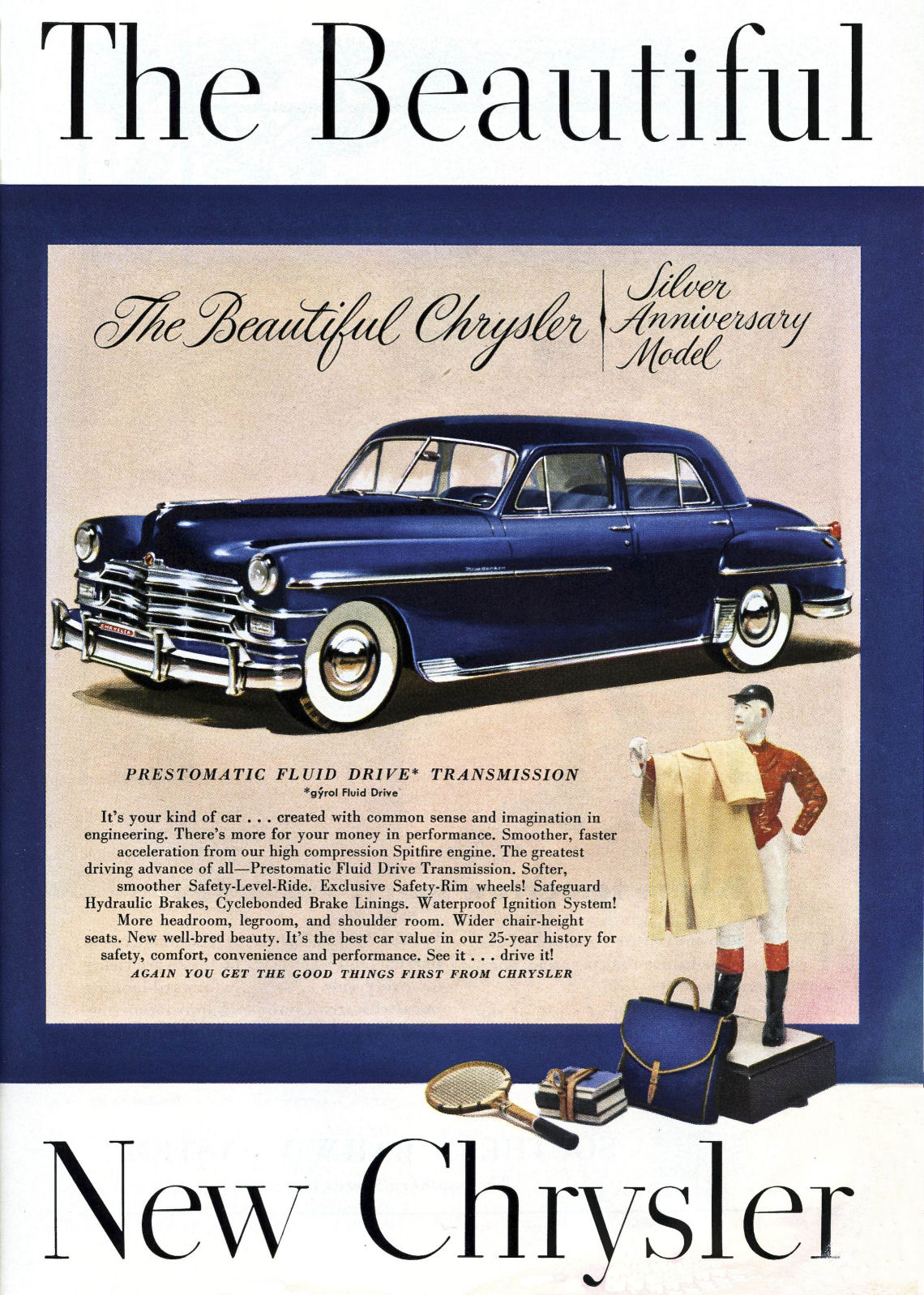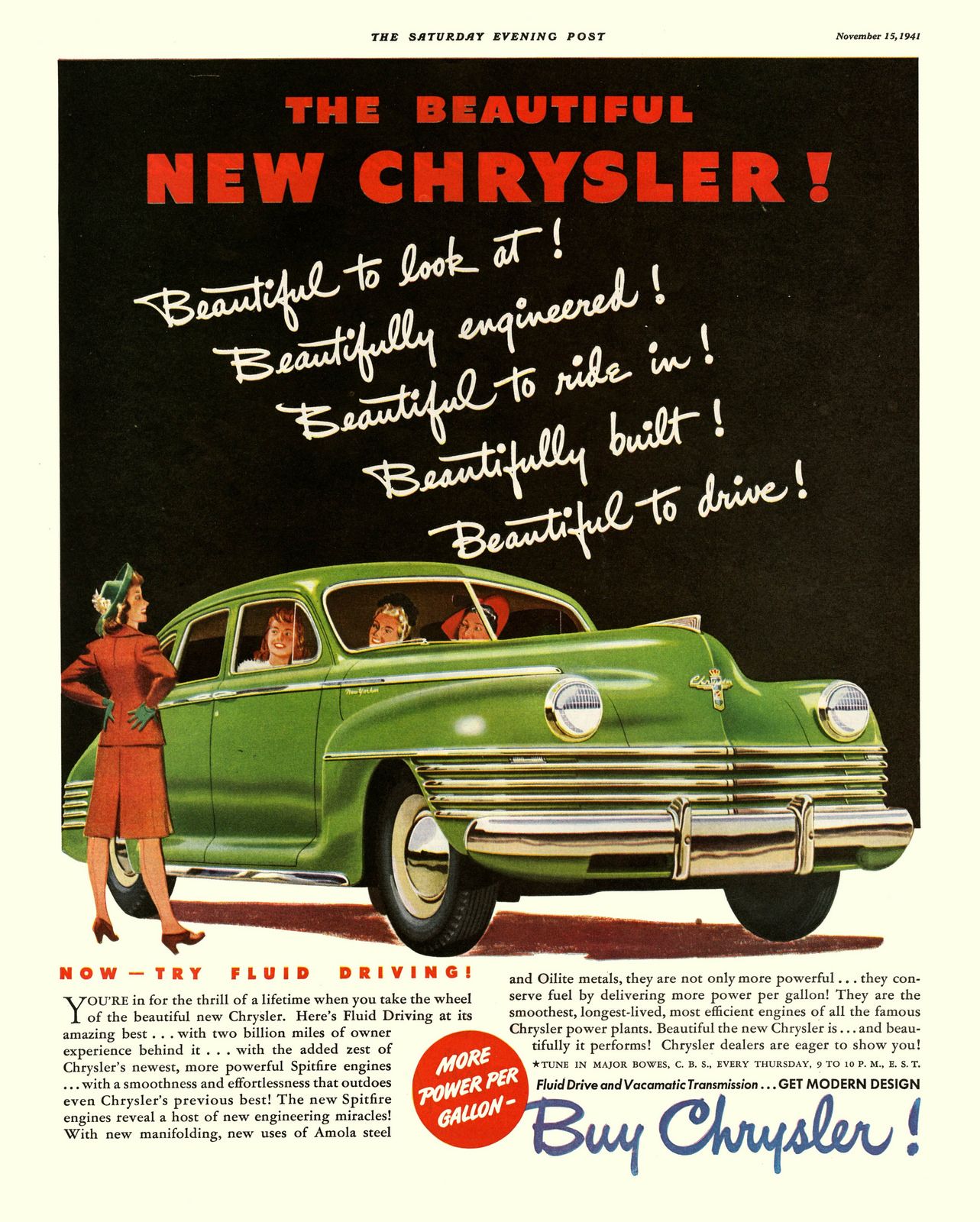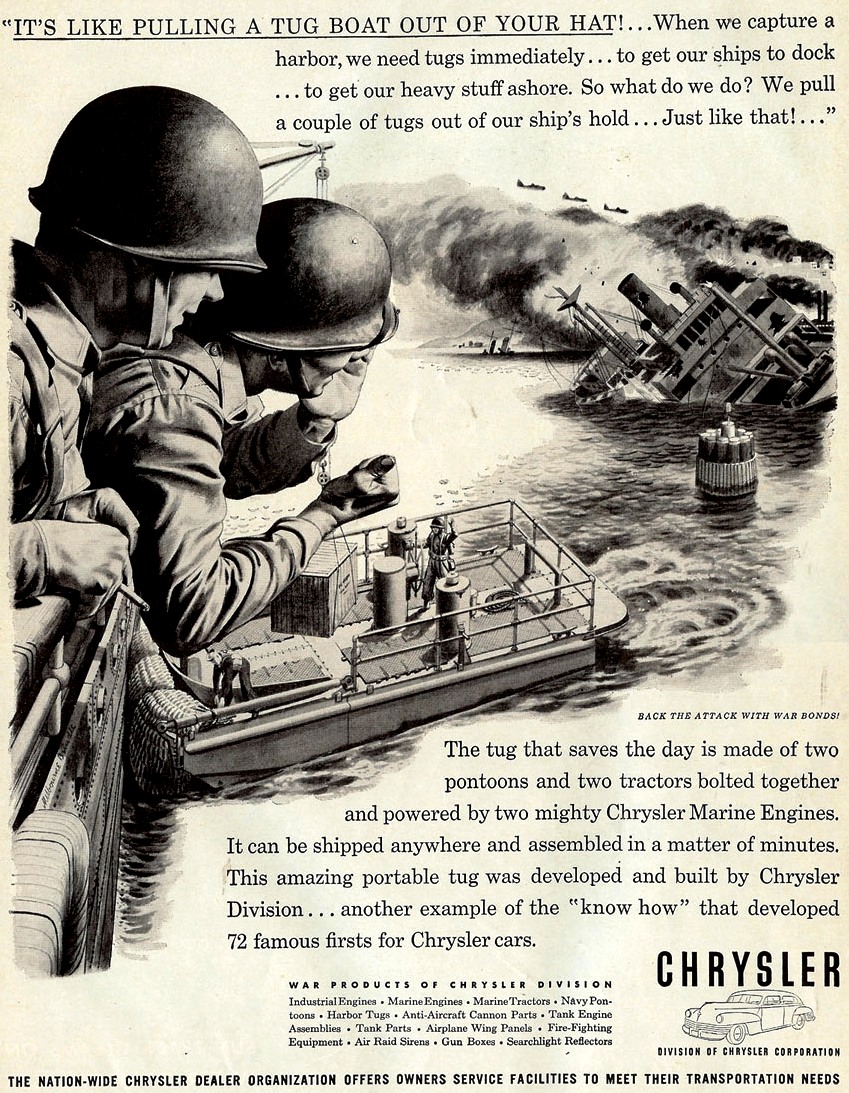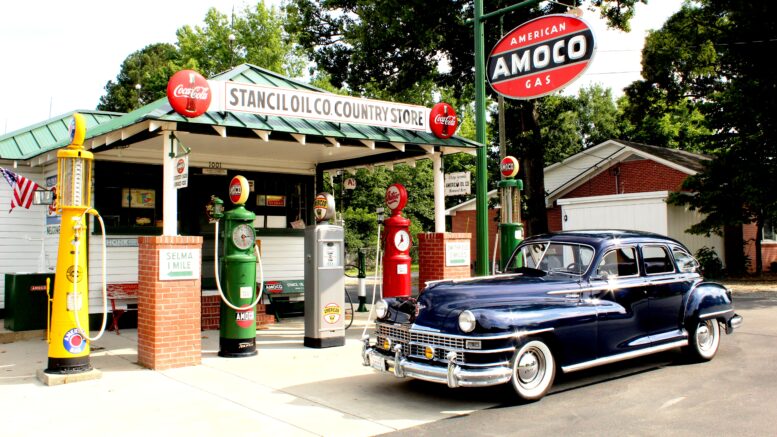Q: Greg I saw your name in “The Pueblo Chieftain” newspaper and in reading your article on “The Beautiful New 1949 Chrysler and a special 1950 Plymouth” you explained about the 1949 Chrysler Second Series cars. I’d like to comment on the 1949 First Series Chrysler models, as I happen to own one.
The 1949 First Series Chryslers were produced between Dec. 3, 1948 and Jan. 11, 1949 as a marketing strategy when, due to production shortages, the Chrysler assembly plants were not ready for the new 1949 production line. So, the 1948 models carried over and were called the “First Series” for 1949.

The new 1949 Series II Chrysler was indeed all-new and was very popular with consumers. (Compliments Chrysler)
Between late 1945 and early 1949, aside from the stunning Town and Country, all Chrysler models were built largely unchanged. Although Chrysler’s sales brochure praised their performance and beauty, postwar buyers wanted more comfortable and durable family cars. Chrysler offered solid body construction and the use of quality materials, and was considered superior to that of the competing General Motors and Ford models.
Inside, Chrysler’s extravagant “jukebox” dashboard was one of the flashiest of the immediate postwar period, and the clear knobs were made of Lucite. Chrome plating was everywhere including a “harmonica” style grille. The steering wheel was 18-inches in diameter with an enormous chrome horn ring. The radio had a tone selector, providing adjustment from mellow-to-speech and with the dial changing from blue-to-red in the process. The emergency brake handle had an umbrella-type handle, orange-in-color, and was highly effective as it operated on the driveshaft rather than the rear brake drums.
The Chrysler New Yorker model C39N came equipped with a 5.3 liter, 323.5-cubic-inch “Spitfire” valve-in-head inline-8 cylinder engine, generating 135 horsepower. These Chryslers were practically hand built, as there were no robots, just rudimentary jigs and gauges. Bodies were only periodically checked, space gauges were handheld, and the only thing automated was a power screwdriver. No two cars were exactly alike and yet the quality was superb, as the fit and finish was some of the best in the industry. Chrysler’s quality during the 1940s was as good as any custom coachbuilder.

When Chrysler introduced its all-new style cars back in late 1941 and 1942, including siblings Plymouth, Dodge and DeSoto, it faced a complete production shut down by government mandate as WWII necessitated all manufacturers concentrate on building only war goods from ’42 through ‘45. Still, the basic style shown in this ’42 Chrysler advertisement lasted until new tooling arrived for the Series II 1949 models. (Compliments Chrysler)
Between 1935 and 1950, Chrysler’s President, Kaufman Thuma (K.T.) Keller, would review finalized car designs. With a hat-in-hand and a milk-can-in-tow, he would sit in the mocked up car wearing his hat and would place the milk can in the trunk. While being bounced around, if the hat touched the roof it had to be raised. If the trunk lid did not close because of the milk can, it had to be enlarged.
These 1949 First Series Chrysler New Yorkers were produced at the East Jefferson Detroit Plant, and I am in possession of the 10th car that came off that assembly line, with info from the Automotive History Preservation Society of Perry, Michigan. This organization reports that only 603 New Yorker Spitfire Inline-8s were produced, and attached are a few photos of my car. I’m still a cruiser here in Selma, N.C., and just wanted you not to forget the First Series of these 1949 era classics.
My wife of nearly 50 years, Nancy, and I have enjoyed this Chrysler at various car shows, assorted cruises, dinners and ice cream outings of the Upper Peninsula and Lower Michigan, Minnesota, Wisconsin, Illinois, and now in North Carolina. This single Chrysler, being the style of the 1948 and registered as a 1949 First Series, depicts our different birth years, too.
Respectfully submitted, John Jarecki, Jr. – Still cruisin’ in North Carolina.
A: John thanks so much for the informative letter on you spectacular 1949 Chrysler New Yorker. Through several email communications, I found out that John is now retired following a 40-year career in law enforcement. His individual careers included an Administrative Lieutenant for nearly 30 years with the Romeoville Police Department in Illinois; Chief of Police for nearly six years for the Norway Police Department in Michigan; and concluding as a Special Agent retained by the United States Office Of Personnel Management. Congrats on a wonderful career, John.

Chrysler was noted for production of military necessities; from ammunition to tug boats, to airplanes during WWII. Its advertising clearly emphasized the company’s military backing. (Compliments Chrysler)
Because of WWII and under government mandate, car manufacturers closed production to concentrate on the war needs, everything from tanks to airplanes. Not one car, commercial truck, or consumer auto part was produced from February of 1942 to October of 1945. Thus, even after an all-new Chrysler model introduction in 1942, it wasn’t until the new Chrysler Series II arrived at dealers in 1949 that new Chrysler models were unveiled.
Also, thanks for arranging photos of your Chrysler at the Stancil Oil Country Store, a former Amoco Gas Station owned by the Stancil Oil Company. Stancil is a longtime home heating oil and propane distributor on US 301-NC, 39-96 southwest of the intersection of South Massey Street and Rick’s Road in Selma, N.C. I recommend readers check out this YouTube video of the Stancil Gas Station and Country Store.
In ending, and as owner of one of the very rare 1949 Series I Chrysler New Yorkers with the inline-8, John is sitting on a nice investment. Thanks again for all the great information and photos.
(Greg Zyla is a syndicated auto columnist. He welcomes reader input on collector cars, auto nostalgia, and old-time motorsports at greg@gregzyla.com.)



Be the first to comment on "Cars We Remember – 1949 Chrysler Series I was last of the war years’ large body designs"